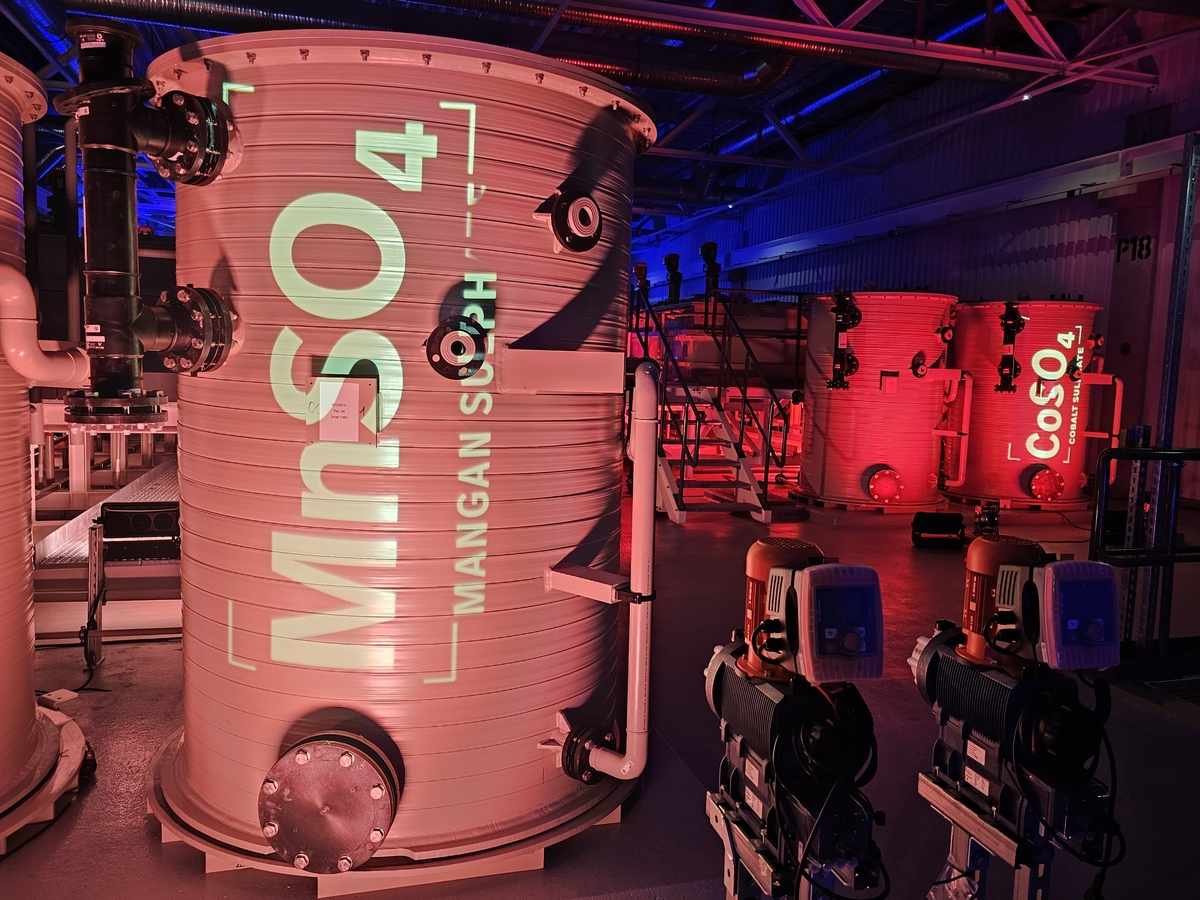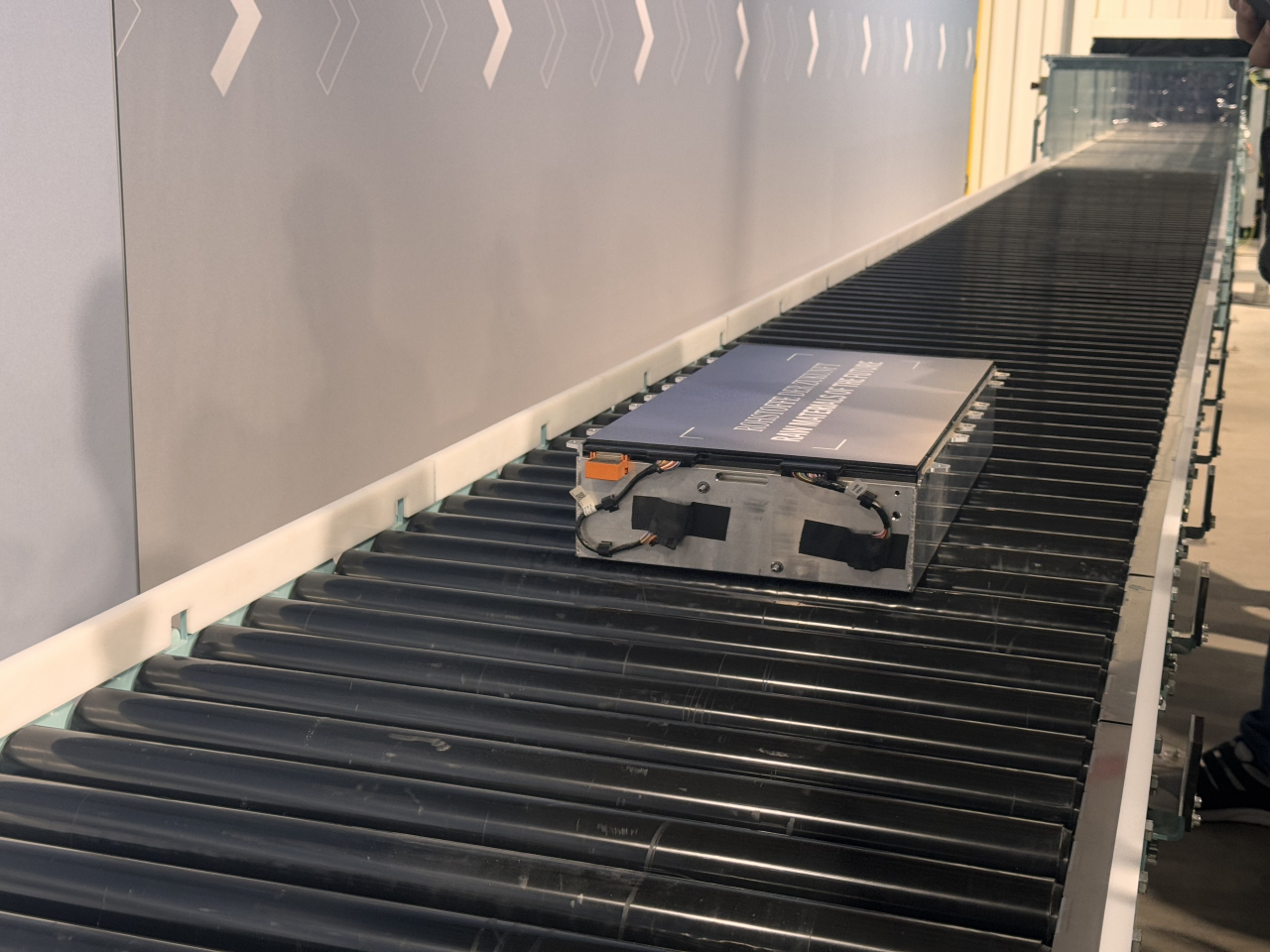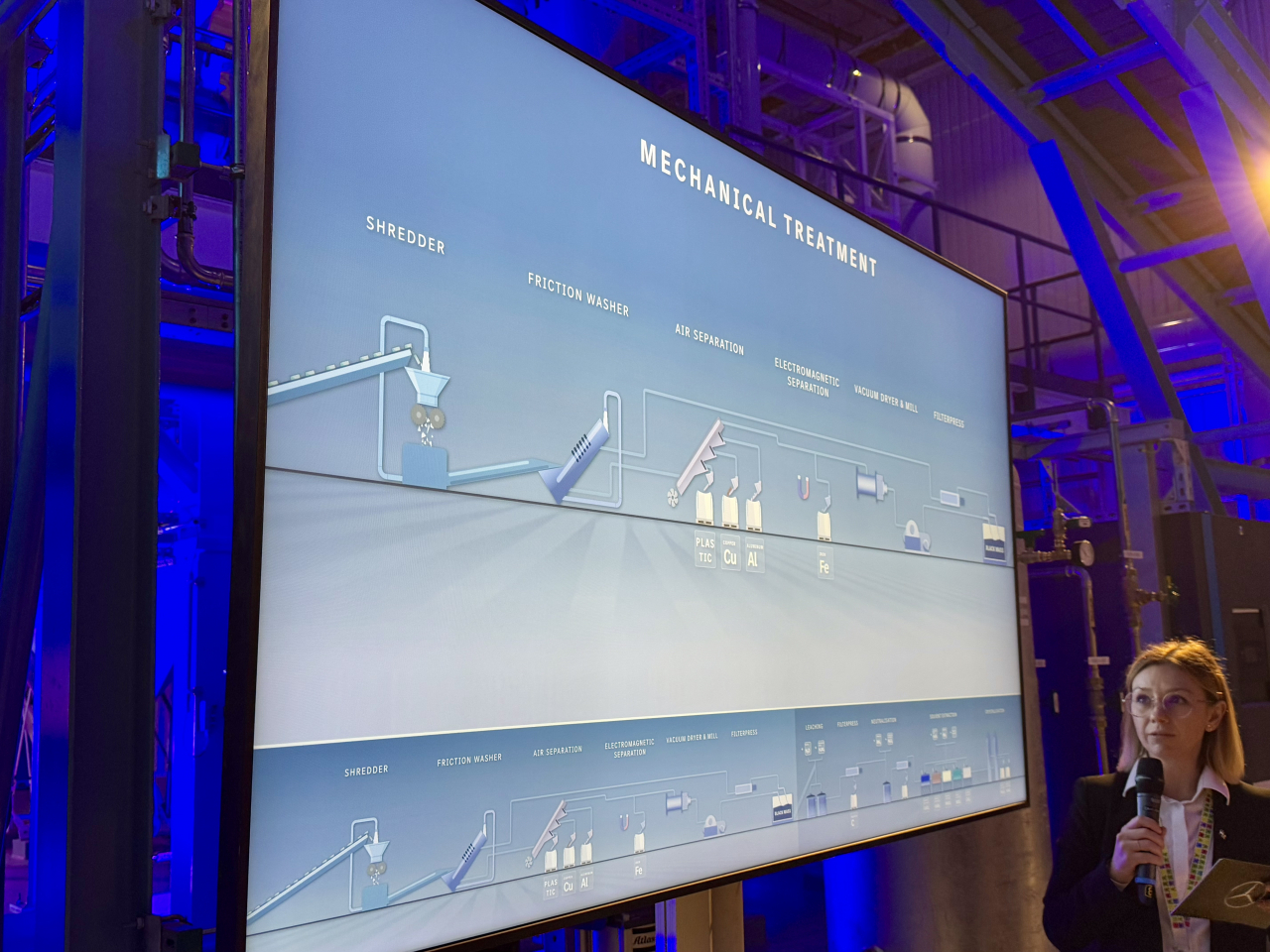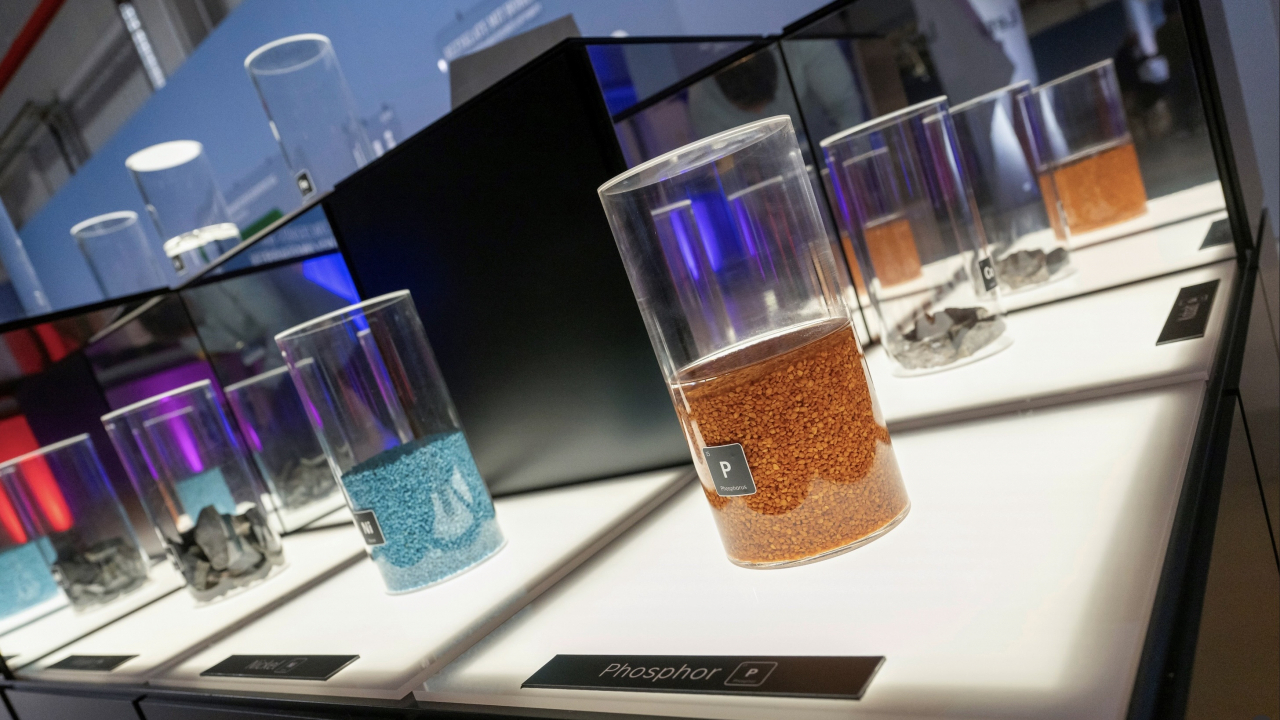 |
Amid vibrant lights and gleaming tanks, Mercedes-Benz officially opened its first in-house battery recycling plant in Kuppenheim, Germany, on Tuesday, a tangible step in the company’s mission to transform waste into new life for electric vehicles. (Mercedes-Benz) |
KUPPENHEIM, Germany -- A two-hour drive southwest of Mercedes-Benz’s Stuttgart headquarters, a new facility in the small town of Kuppenheim is poised to play a big role in the auto giant’s sustainability efforts.
On Monday, brightly lit tanks, each glowing with a different hue, lined the walls of the 6,800-square-meter space, labeled with symbols for essential elements: lithium, nickel, cobalt and manganese. This is not a scene from a sci-fi movie, but a staged media presentation -- the unveiling of Mercedes-Benz’s first in-house battery recycling plant.
 |
These brightly lit tanks marked with “MnSO4” and “CoSO4” are key to breaking down old electric vehicle batteries and recovering valuable metals like manganese and cobalt. (Mercedes-Benz) |
Manuel Michel, the company’s head of battery recycling, proudly described what makes this facility unique: “We are the first global automaker to establish our own battery recycling plant. This facility allows us to oversee the entire recycling process, making resource circularity a reality and propelling us closer to our goal of carbon neutrality by 2039.”
The plant, officially opening Tuesday, represents a milestone in Mercedes-Benz’s sustainability roadmap. Housed in what was once a body shop built in 2009, the facility has undergone renovations since early 2023. Now, it will take on a new purpose of transforming end-of-life battery modules into valuable raw materials for electric vehicles.
4-day transformation
The recycling process is both sophisticated and efficient. It starts with used battery modules -- silvery boxes sliding along a conveyor belt -- being fed into a massive shredder.
 |
Used battery modules glide along a conveyor belt towards a massive shredder (Mercedes-Benz) |
 |
(Moon Joon-hyun/The Korea Herald) |
From there, they undergo a series of mechanical and chemical processes to reclaim high-purity metals. This plant can handle a range of battery shapes, including the increasingly common pouch and cylindrical formats, making it versatile enough to process various battery types. Within four days, a discarded battery module can be completely broken down and its valuable components extracted.
 |
Roxana Maria Truta, Mercedes-Benz’s battery recycling process development manager, stands next to a detailed diagram showcasing the company’s battery recycling process, which uses a combination of mechanical and wet, or hydrometallurgical methods to recover valuable raw materials like copper, aluminum and iron from end-of-life batteries. (Moon Joon Hyun/The Korea Herald) |
The combination of processes the Kuppenheim facility employs sets it apart from traditional battery recycling plants. In addition to standard mechanical shredding and thermal treatment, Mercedes-Benz has introduced an innovative hydrometallurgical, or “wet” process. This involves breaking down battery cells and using sulfuric acid to extract essential metals, a technique that boasts higher recovery rates while consuming less energy.
“Before the shredding begins, we make sure all battery modules are fully discharged,” Michel explained. “Then we cool them down using liquid cooling to eliminate any risk of fire or explosion.” This meticulous attention to safety has allowed the company to avoid the hazards typically associated with battery recycling.
Extracting value, reducing waste
Once the batteries are shredded, a powerful air current separates the material by weight, sending plastics, copper and aluminum to separate bins. Magnets are used to sort out any iron content. These materials are then packaged for further recycling.
The remaining finer particles undergo additional processing, turning into a fine black powder known as “black mass.” It is here that the real alchemy happens. Containing a mixture of valuable elements, this black mass is vacuum-dried, then refined and filtered before moving into 100 cylindrical tanks for chemical extraction.
In these tanks, the black mass is dissolved in sulfuric acid, separating into its elemental components: cobalt sulfate, nickel sulfate, lithium sulfate and manganese sulfate. The solution is then treated with solvents to isolate these metals at very high purity levels.
 |
Phosphor, extracted during Mercedes-Benz’s battery recycling process, is one of several elements on display at the Kuppenheim facility. (Mercedes-Benz) |
“The wet process enables us to recover on average 96 percent of all the input materials, far surpassing traditional methods,” said Roxana Maria Truta, Mercedes-Benz’s battery recycling process development manager. “This includes a significant boost in the efficiency of lithium extraction, which has always been a challenge with dry processing techniques.”
Although most of the process is automated, to ensure quality, the plant’s small team of 50 employees monitors operations around the clock in three shifts, continuously sampling materials for purity.
Closing the loop
At full capacity, the Kuppenheim plant is capable of processing 2,500 metric tons of waste batteries annually, enough to produce 50,000 new battery modules. Mercedes-Benz has clear plans for these reclaimed materials -- they will be used not only in new electric vehicle batteries but also in energy storage systems, further reducing the need for freshly mined raw materials.
According to the company, the initial batteries for recycling will come from Mercedes-Benz’s research and development sector. But this is just the beginning: the automaker plans to increase the plant’s processing capacity and is already considering future expansions.
Jorg Burzer, who has been responsible for production and supply chain management on the board of management of Mercedes-Benz AG since 2019, said, “We are committed to mastering every aspect of the battery value chain. With the new eCampus in Stuttgart-Unterturkheim focusing on battery chemistry development and now Kuppenheim’s advanced recycling, we’re closing the loop on raw materials. To put it another way, today’s batteries will become tomorrow’s ‘sustainable mine.’”







![[Today’s K-pop] Blackpink’s Jennie, Lisa invited to Coachella as solo acts](http://res.heraldm.com/phpwas/restmb_idxmake.php?idx=644&simg=/content/image/2024/11/21/20241121050099_0.jpg)